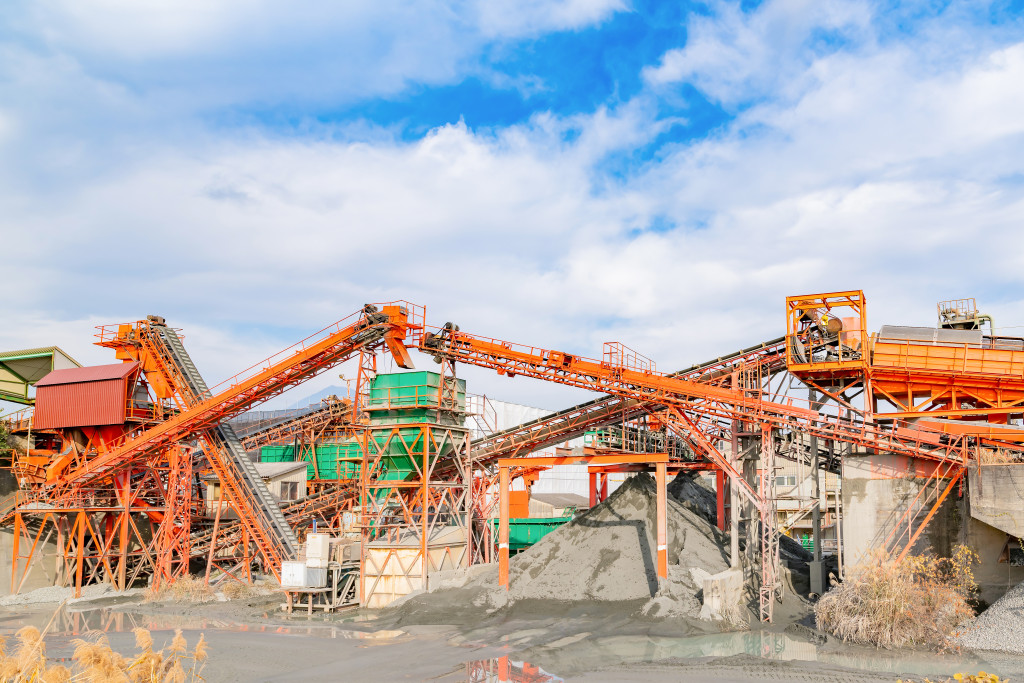- Cement is a fine powder obtained by grinding a mixture of limestone, clay, and other materials.
- Cement manufacturing involves mixing, heating, and grinding raw materials to create cement.
- Extraction of raw materials, grinding and mixing, preheating/calcination, clinker grinding, and packaging/delivery are the steps in cement manufacturing.
- Equipment used in cement manufacturing includes crushers, raw mills, kilns, clinker coolers, and cement mills.
- Primary raw materials used in cement manufacturing are limestone, shale, and clay.
Cement is a vital component in the construction industry. Business owners in the construction industry must have a good understanding of cement manufacturing. In this blog post, we will guide you on everything you need to know about cement manufacturing.:
What is cement?
Cement is a fine powder obtained by grinding a mixture of limestone, clay, and other materials. Cement is a crucial material that binds aggregates such as sand and gravel together to produce concrete.
Cement manufacturing process
Cement is a crucial component in construction and is fundamental in providing the foundation for building homes, bridges, highways, and skyscrapers. Cement manufacturing has been an essential part of the construction industry for centuries. It involves a complex process of mixing, heating, and grinding raw materials to create cement. Here are the intricate steps involved in the cement manufacturing process.
Step 1: Extraction of Raw Materials
The first step in cement manufacturing is extracting raw materials like limestone, shale, and clay from quarries. These materials are then crushed and transported to the cement plant.
Step 2: Raw Material Grinding and Mixing
The raw materials are ground and mixed to create a raw meal within the plant. The raw meal is a fine powder that is composed of limestone, shale, and clay. After grinding, the raw meal is transferred to blending silos, and stored until further processing.
Step 3: Preheating and Calcination
The raw meal is then heated at temperatures up to 1,450 degrees Celsius in a preheater tower. This process is known as calcination and is done under controlled conditions to ensure the proper chemical composition of the raw meal—calcination results in the formation of clinker, a coarse-grained nodular material.
Step 4: Clinker Grinding
The clinker is cooled and stored in silos before being transferred to the cement mill for grinding. Gypsum is added to the clinker, and the mixture is finely ground to form the cement powder.
Step 5: Packaging and Delivery
The final step in the cement manufacturing process is packaging and delivery. The cement is packaged in bags or bulk and is transported to construction sites where it is used to build roads, bridges, and buildings.
Equipment used in cement manufacturing
The equipment used in cement manufacturing includes crushers, raw mills, kilns, clinker coolers, and cement mills. Each of these machines plays a critical role in cement production, but one piece of equipment that stands out is the mill liner. A mill liner protects the interior of the cement mill from abrasion and impact, ensuring the longevity and efficiency of the mill.
Mill liners have various types and applications, such as shell liners, grate liners, combination liners, and lifter bars. But the most critical application is that it helps prevent wear and tear on the mill interior. This helps in maintaining the efficiency of the mill and reducing costs associated with maintenance and downtime.
Raw materials used in cement manufacturing
Limestone, shale, and clay are the primary raw materials used to produce cement. These raw materials are crushed, screened, and transported to the cement plant. Other materials, such as iron ore, fly ash, and bauxite, can also be used as secondary raw materials to replace some primary raw materials.
Environmental impact of cement manufacturing
Cement manufacturing significantly impacts the environment due to the enormous energy consumption and CO2 emissions. Cement plants also generate large amounts of dust and other pollutants. To reduce the environmental impact of cement manufacturing, some cement plants use alternative fuels such as biomass, waste oils, and tires to replace traditional fossil fuels.
Quality control in cement manufacturing

Quality control is a vital aspect of cement manufacturing. Cement plants must ensure that the quality of their product is consistent and meets the necessary standards. Quality control starts at the quarry site and continues throughout manufacturing. The finished product is tested to ensure that it meets the required specifications.
The bottom line
In conclusion, cement is a crucial component in the construction industry, and business owners must understand cement manufacturing well. Understanding the cement manufacturing process, raw materials used, the environmental impact, and quality control are essential to running a successful cement manufacturing business. By following the information in this guide, you’ll be equipped with the knowledge needed to navigate the world of cement manufacturing.

